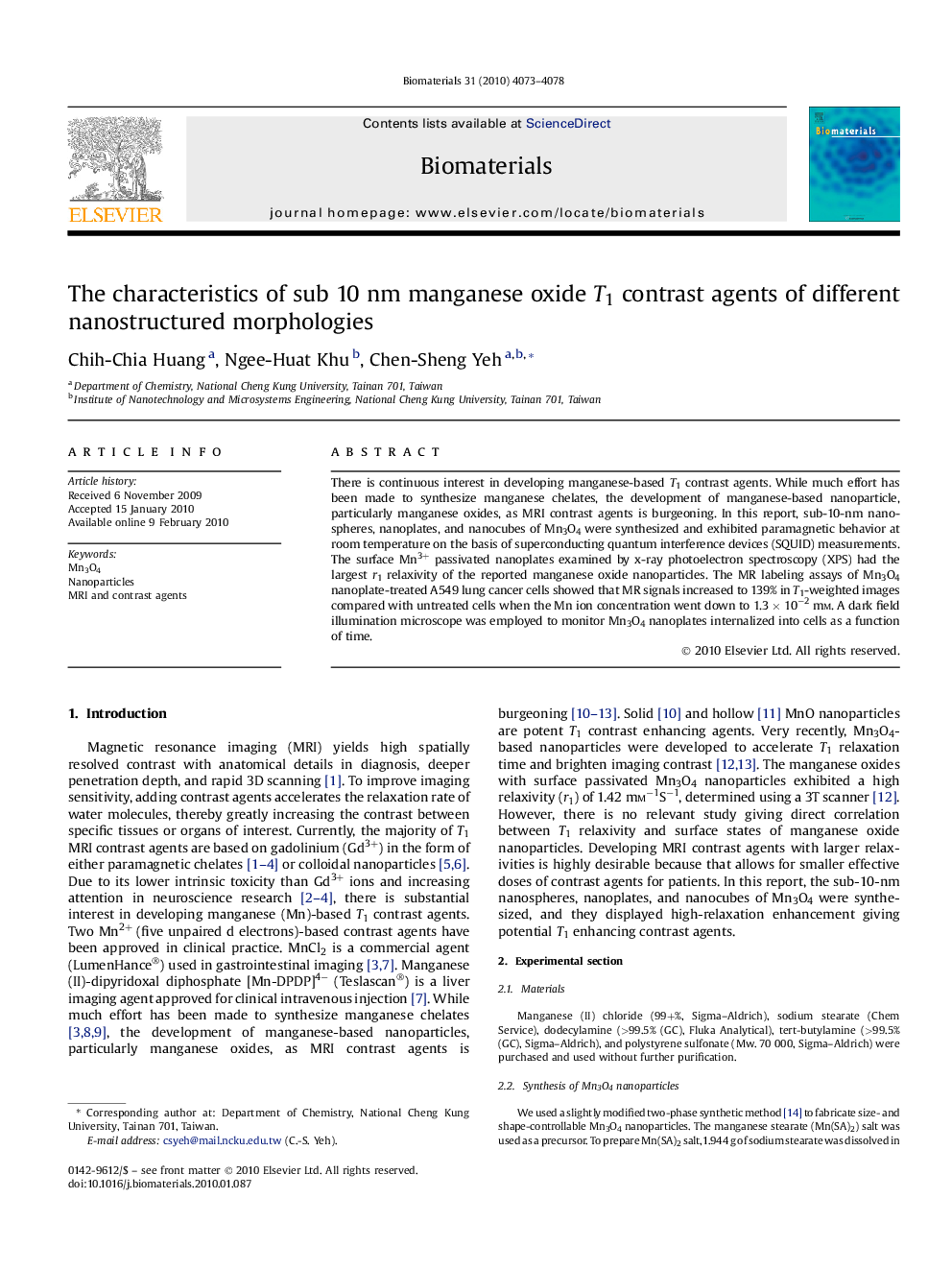| Article ID | Journal | Published Year | Pages | File Type |
|---|---|---|---|---|
| 9114 | Biomaterials | 2010 | 6 Pages |
There is continuous interest in developing manganese-based T1 contrast agents. While much effort has been made to synthesize manganese chelates, the development of manganese-based nanoparticle, particularly manganese oxides, as MRI contrast agents is burgeoning. In this report, sub-10-nm nanospheres, nanoplates, and nanocubes of Mn3O4 were synthesized and exhibited paramagnetic behavior at room temperature on the basis of superconducting quantum interference devices (SQUID) measurements. The surface Mn3+ passivated nanoplates examined by x-ray photoelectron spectroscopy (XPS) had the largest r1 relaxivity of the reported manganese oxide nanoparticles. The MR labeling assays of Mn3O4 nanoplate-treated A549 lung cancer cells showed that MR signals increased to 139% in T1-weighted images compared with untreated cells when the Mn ion concentration went down to 1.3 × 10−2 mm. A dark field illumination microscope was employed to monitor Mn3O4 nanoplates internalized into cells as a function of time.
